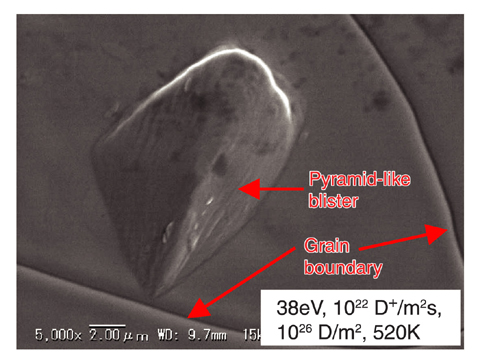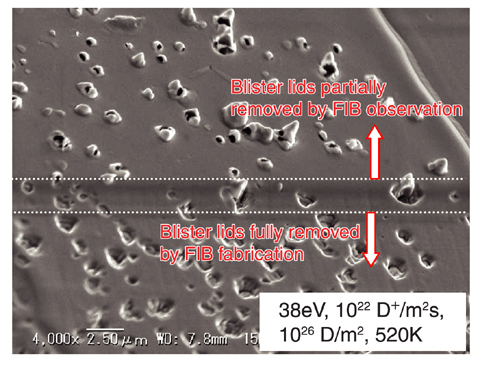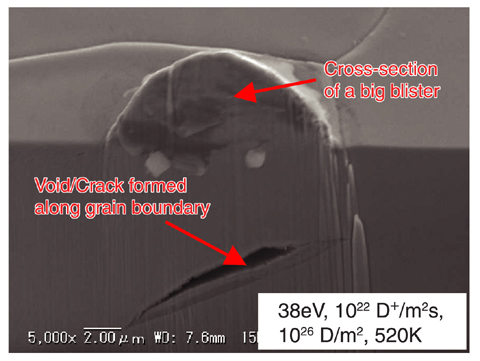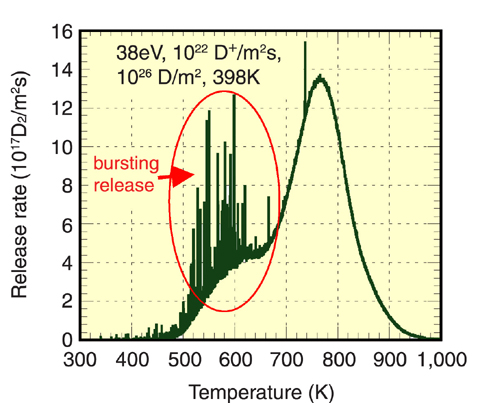
Fig.3-22 Pyramid-like blister on tungsten

Fig.3-23 Internal features of small blisters

Fig.3-24 Cross-section of a big blister

Fig.3-25 Deuterium release rate (0.5 K/s)
Gas (hydrogen, helium, etc.) ion implantation into solids will cause surface structures like blisters. For blisters formed by ions with energy higher than 1 keV, the cavity filled with gases between the surfaced layer and the bulk is generally assumed to be of a lenticular shape with a typical ratio of height against inner diameter of base of about 0.05.
Tungsten is a most promising plasma facing material because of its high melting point. Thus, we investigated its blistering and deuterium retention by exposing recrystallized tungsten samples to simulating edge plasma at fusion reactors (energy: a few tens of eV; flux: 1022 D+/m2s; fluence: up to 1027 D/m2). As shown in Fig.3-22 and Fig.3-23, two kinds of high-dome blisters appeared at the tungsten surface after deuterium plasma exposure. One is a big blister with magnitude of greater than a few microns and various shapes, even pyramids (Fig.3-22), and the other is a small blister with size of less than a few microns (Fig.3-23). The ratio of height against inner diameter for both blisters is one-order greater than that reported before, indicating local superplasticity. In addition, there were cavities inside small blisters (Fig.3-23), whereas there were voids/cracks along the grain boundary beneath the big blisters but no hollow lid formed (Fig.3-24). Furthermore, bursting release of deuterium with sudden peaks was observed during heating (Fig.3-25).
These high-dome blisters were considered to be formed by hydrogen-induced local superplasticity due to the generation of atom vacancies and subsequent formation and clustering of hydrogen and vacancies which diffuse deeply into the bulk (i.e. diffusion of tungsten atoms to the surface). Blister formation is a drawback to tungsten as plasma facing material. Since the mechanism has been revealed, efforts will be made to develop techniques for alleviating blistering.